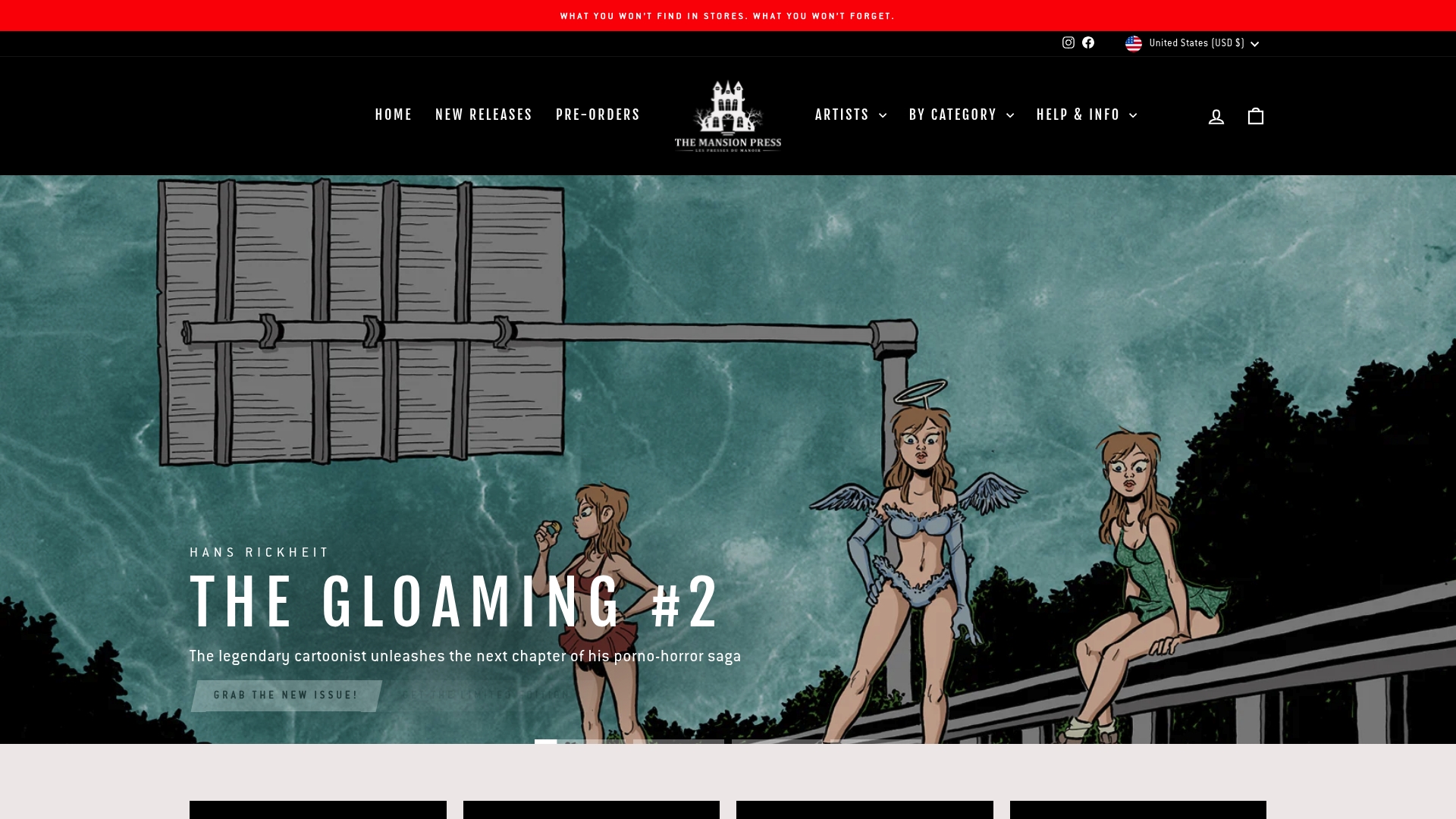Complete Guide to Erotic Comics: Styles, History, Laws
Erotic comics are far more than explicit drawings on a page—these graphic works challenge artistic boundaries while exploring the depths of human intimacy. With over 84 percent accuracy now possible in digital systems that moderate content, this genre is coming into sharper focus for collectors and creators alike. Whether you are curious about their narrative richness or their evolving legal status, understanding erotic comics opens the door to new ways of seeing art, desire, and storytelling.
Table of Contents
- Defining Erotic Comics And Their Core Elements
- Major Genres And Narrative Styles Explained
- Artistic Evolution And Influential Creators
- International Legal Status And Ethical Issues
- Collecting, Creating, And Common Misconceptions
Key Takeaways
| Point | Details |
|---|---|
| Mature and Complex Genre | Erotic comics are artistic expressions focusing on human intimacy and sexual relationships, blending explicit content with sophisticated narratives. |
| Cultural and Legal Influences | The genre’s evolution is shaped by cultural contexts and legal frameworks, affecting representation and creative freedom. |
| Ethical Considerations | Key ethical issues include consent, cultural sensitivity, and the balance between artistic expression and social responsibility. |
| Misconceptions Addressed | Erotic comics are often misunderstood; they are not merely pornographic but incorporate deep narrative and artistic depth. |
Defining Erotic Comics and Their Core Elements
Erotic comics represent a specialized artistic genre designed for mature audiences, focusing on explicit visual storytelling through graphic illustrations that explore sexual themes and human intimacy. According to Wikipedia, these works are “adult-oriented comics that focus substantially on nudity and sexual activity, either for their own sake or as major story elements.”
Unlike mainstream comics, erotic comics encompass diverse formats ranging from single provocative panels to elaborate graphic novels. They are not simply pornographic representations but complex artistic expressions that investigate human sexuality, emotional connections, and cultural perspectives. The genre demands sophisticated narrative techniques and nuanced visual storytelling that transcends basic sexual depiction.
The core elements of erotic comics typically include:
- Mature thematic exploration of human relationships
- Explicit yet artistically rendered visual representations
- Narrative complexity beyond sexual encounters
- Diverse artistic styles and visual techniques
- Psychological and emotional depth in character development
Interestingly, PDX Scholar highlights how cultural contexts significantly impact erotic comics, particularly in regions like Japan where censorship and artistic regulations create unique creative challenges. This demonstrates that erotic comics are not monolithic but dynamic art forms deeply influenced by cultural, legal, and artistic environments.
The genre requires a nuanced understanding of visual storytelling, challenging artists to balance provocative imagery with meaningful narrative structures. Successful erotic comics transform sexual themes from mere physical representations into profound explorations of human desire, vulnerability, and connection.
Major Genres and Narrative Styles Explained
Erotic comics are not a monolithic genre but a complex landscape of diverse narrative styles and artistic expressions that explore human sexuality through nuanced storytelling. Different subgenres emerge from cultural contexts, artistic traditions, and narrative approaches, each offering unique perspectives on intimate human experiences.
One fascinating subgenre is Teens’ Love (TL), which according to Wikipedia is a Japanese comic style “characterized by romantic and sexually explicit relationships between male and female protagonists.” Unlike purely sexual narratives, TL emphasizes emotional development, often set in contemporary Japanese environments like offices or fantasy worlds, highlighting the genre’s complexity beyond physical representation.
Another provocative narrative style is Ero Guro, a genre that deliberately challenges traditional artistic boundaries. Wikipedia describes this style as combining “erotic” and “grotesque” elements, exploring themes of sexual corruption, decadence, and psychological complexity. Originating in 1920s Tokyo, Ero Guro challenges viewers by intertwining eroticism with disturbing, often surreal imagery that probes the darker aspects of human desire.
Major genres within erotic comics can be categorized as:
- Romantic Exploration: Emphasizing emotional connections
- Psychological Narrative: Investigating complex sexual dynamics
- Fantasy and Speculative: Using alternative worlds to explore sexuality
- Cultural Commentary: Examining social norms through intimate storytelling
- Experimental Visual Styles: Pushing artistic representation boundaries
For readers interested in diving deeper into graphic novel narrative techniques, check out our narrative techniques in graphic novels guide, which provides additional context for understanding complex storytelling approaches.
Understanding these genres requires recognizing that erotic comics are sophisticated art forms.
They transcend simple sexual depiction, instead offering profound explorations of human vulnerability, desire, and emotional complexity through visually compelling and intellectually engaging narratives.
Artistic Evolution and Influential Creators
The artistic landscape of erotic comics has been shaped by pioneering creators who challenged societal norms and pushed the boundaries of visual storytelling. These artists transformed erotic illustration from mere sexual depiction to complex narrative art that explores human intimacy, emotion, and psychological depth.
One notable example is the Bondage Fairies series, which Wikipedia describes as an early sexually explicit manga serialized in 1990 by Teruo Kakuta (pen name ‘Kondom’). This work was groundbreaking, being among the first sexually explicit manga commercially published in the United States in 1994, featuring forest fairies Pfil and Pamila who engage in various sexual acts while protecting their environment.
Underground comics also played a crucial role in expanding the genre’s artistic boundaries. Wikipedia highlights Gay Heart Throbs, an influential underground comic featuring gay erotica published between 1976 and 1981. Though short-lived with only three issues, it was considered the first gay comic and paved the way for more emotionally nuanced representations of queer sexuality in graphic storytelling.
Key milestones in erotic comics artistic evolution include:
- Breaking traditional narrative constraints
- Challenging societal sexual taboos
- Developing sophisticated visual storytelling techniques
- Exploring diverse sexual and gender identities
- Creating complex emotional narratives beyond physical representation
To explore more about the fascinating world of graphic novel art styles, check out our understanding unique illustration styles guide.
The artistic journey of erotic comics demonstrates how visual storytellers continuously redefine artistic expression, transforming provocative imagery into profound explorations of human experience, vulnerability, and connection.
International Legal Status and Ethical Issues
The legal landscape surrounding erotic comics is complex, with regulations varying dramatically across different cultural and legal jurisdictions. These complexities arise from fundamental tensions between artistic expression, cultural norms, and concerns about potential harm or exploitation.
PDX Scholar provides critical insight into the nuanced world of erotic manga censorship, revealing how legal frameworks can significantly impact artistic creation. The research highlights that censorship in regions like Japan is not merely a legal constraint but a sophisticated system involving intricate cultural negotiations about representation, consent, and artistic boundaries.
Technological advancements are increasingly shaping legal and ethical considerations in erotic content moderation. Researchers from arXiv have developed innovative context-aware systems capable of distinguishing between harmful and non-harmful erotic content, demonstrating an 84% accuracy in identifying potentially problematic representations. This technological approach represents a sophisticated alternative to blanket censorship, focusing on nuanced contextual understanding.
Key ethical considerations in erotic comics include:
- Consent and representation of sexual subjects
- Age verification and preventing minor exploitation
- Cultural sensitivity and avoiding harmful stereotypes
- Protecting artists’ creative freedom
- Balancing artistic expression with social responsibility
To gain deeper insights into the complex world of graphic novel representation, explore our understanding underground comic creators guide.
Ultimately, the legal and ethical landscape of erotic comics remains a dynamic intersection of artistic expression, technological innovation, and evolving social standards. Responsible creators and consumers must continuously engage with these nuanced discussions, recognizing the delicate balance between creative freedom and social responsibility.
Collecting, Creating, and Common Misconceptions
Erotic comics represent a nuanced artistic medium that requires sophisticated understanding beyond simplistic stereotypes. Collectors, creators, and enthusiasts navigate a complex landscape that demands artistic appreciation, ethical consideration, and cultural sensitivity.
According to Erotic Literature and Cinema, artistic choices in erotic comics are deeply intentional. The use of color, line, and texture can powerfully convey emotions, consent, and narrative complexity. Artists strategically employ visual techniques to signal intimacy, personal boundaries, and psychological depth, transforming the medium from mere sexual representation to profound storytelling.
EBSCO highlights the diverse illustrative approaches in adult-oriented visual narratives, noting that artists navigate a spectrum between realism and iconicity. This flexibility allows creators to tackle sophisticated themes through both hyper-realistic and stylized representations, challenging viewers’ perceptions and expectations.
Common misconceptions about erotic comics include:
- They are simply pornographic material
- All erotic comics are the same
- The genre lacks artistic or narrative depth
- Creation is easy or requires minimal skill
- Collectors are a monolithic, uniform group
For enthusiasts interested in expanding their artistic knowledge, our understanding artbook collecting basics guide provides additional insights into curating meaningful collections.
Successful engagement with erotic comics requires nuanced understanding: recognizing them as complex artistic expressions that explore human intimacy, emotional landscapes, and cultural narratives through sophisticated visual storytelling.
Explore the Art and Stories Behind Erotic Comics with Exclusive Collectibles
Navigating the rich complexity of erotic comics can feel overwhelming, especially when trying to find authentic works that honor the genre’s narrative depth and artistic evolution. Whether you are seeking sophisticated storytelling, unique artistic styles like Teens’ Love or Ero Guro, or want to support creators who challenge societal norms, it is essential to connect with a platform that values these nuances.

Discover exclusive limited-edition artbooks, collector’s comics, and original artworks that celebrate the emotional, psychological, and cultural layers of erotic comics at The Mansion Press. Start building a meaningful collection that respects the genre’s complexity today and dive deeper into a world where artistic freedom and intimate storytelling thrive. Browse now and elevate your passion for erotic graphic storytelling with pieces you won’t find anywhere else.
Frequently Asked Questions
What are erotic comics?
Erotic comics are a specialized genre designed for mature audiences, focusing on explicit visual storytelling that explores sexual themes and human intimacy through graphic illustrations.
What are the core elements of erotic comics?
The core elements include mature thematic exploration of human relationships, explicit visual representations, narrative complexity, diverse artistic styles, and psychological and emotional depth in character development.
How do the genres within erotic comics differ?
Genres within erotic comics differ based on narrative styles and thematic focus. This includes subgenres like Teens’ Love, Ero Guro, romantic exploration, psychological narratives, and cultural commentary, each offering unique perspectives on intimacy and sexuality.
What are the main ethical issues surrounding erotic comics?
Main ethical issues include consent and representation of sexual subjects, preventing minor exploitation, cultural sensitivity, protecting artists’ creative freedom, and balancing artistic expression with social responsibility.

